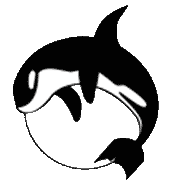Abbas, Hawraa, Hicks, Yulia  ORCID: https://orcid.org/0000-0002-7179-4587, Marshall, Andrew ORCID: https://orcid.org/0000-0002-7179-4587, Marshall, Andrew  ORCID: https://orcid.org/0000-0003-2789-1395, Zhurov, Alexei ORCID: https://orcid.org/0000-0003-2789-1395, Zhurov, Alexei  ORCID: https://orcid.org/0000-0002-5594-0740 and Richmond, Stephen ORCID: https://orcid.org/0000-0002-5594-0740 and Richmond, Stephen  ORCID: https://orcid.org/0000-0001-5449-5318
2018.
A 3D morphometric perspective for facial gender analysis and classification using geodesic path curvature features.
Computational Visual Media
4
(1)
, pp. 17-32.
10.1007/s41095-017-0097-1 ORCID: https://orcid.org/0000-0001-5449-5318
2018.
A 3D morphometric perspective for facial gender analysis and classification using geodesic path curvature features.
Computational Visual Media
4
(1)
, pp. 17-32.
10.1007/s41095-017-0097-1
|
Preview |
PDF
- Published Version
Available under License Creative Commons Attribution. Download (2MB) | Preview |
Abstract
The relationship between the shape and gender of a face, with particular application to automatic gender classification, has been the subject of significant research in recent years. Determining the gender of a face, especially when dealing with unseen examples, presents a major challenge. This is especially true for certain age groups, such as teenagers, due to their rapid development at this phase of life. This study proposes a new set of facial morphological descriptors, based on 3D geodesic path curvatures, and uses them for gender analysis. Their goal is to discern key facial areas related to gender, specifically suited to the task of gender classification. These new curvature-based features are extracted along the geodesic path between two biological landmarks located in key facial areas. Classification performance based on the new features is compared with that achieved using the Euclidean and geodesic distance measures traditionally used in gender analysis and classification. Five different experiments were conducted on a large teenage face database (4745 faces from the Avon Longitudinal Study of Parents and Children) to investigate and justify the use of the proposed curvature features. Our experiments show that the combination of the new features with geodesic distances provides a classification accuracy of 89%. They also show that nose-related traits provide the most discriminative facial feature for gender classification, with the most discriminative features lying along the 3D face profile curve.
| Item Type: | Article |
|---|---|
| Date Type: | Publication |
| Status: | Published |
| Schools: | Computer Science & Informatics Dentistry Engineering |
| Publisher: | Springer |
| ISSN: | 2096-0433 |
| Date of First Compliant Deposit: | 20 December 2017 |
| Date of Acceptance: | 22 October 2017 |
| Last Modified: | 05 May 2023 06:54 |
| URI: | https://orca.cardiff.ac.uk/id/eprint/107716 |
Citation Data
Cited 11 times in Scopus. View in Scopus. Powered By Scopus® Data
Actions (repository staff only)
 |
Edit Item |




 Altmetric
Altmetric Altmetric
Altmetric
 Cardiff University Information Services
Cardiff University Information Services

